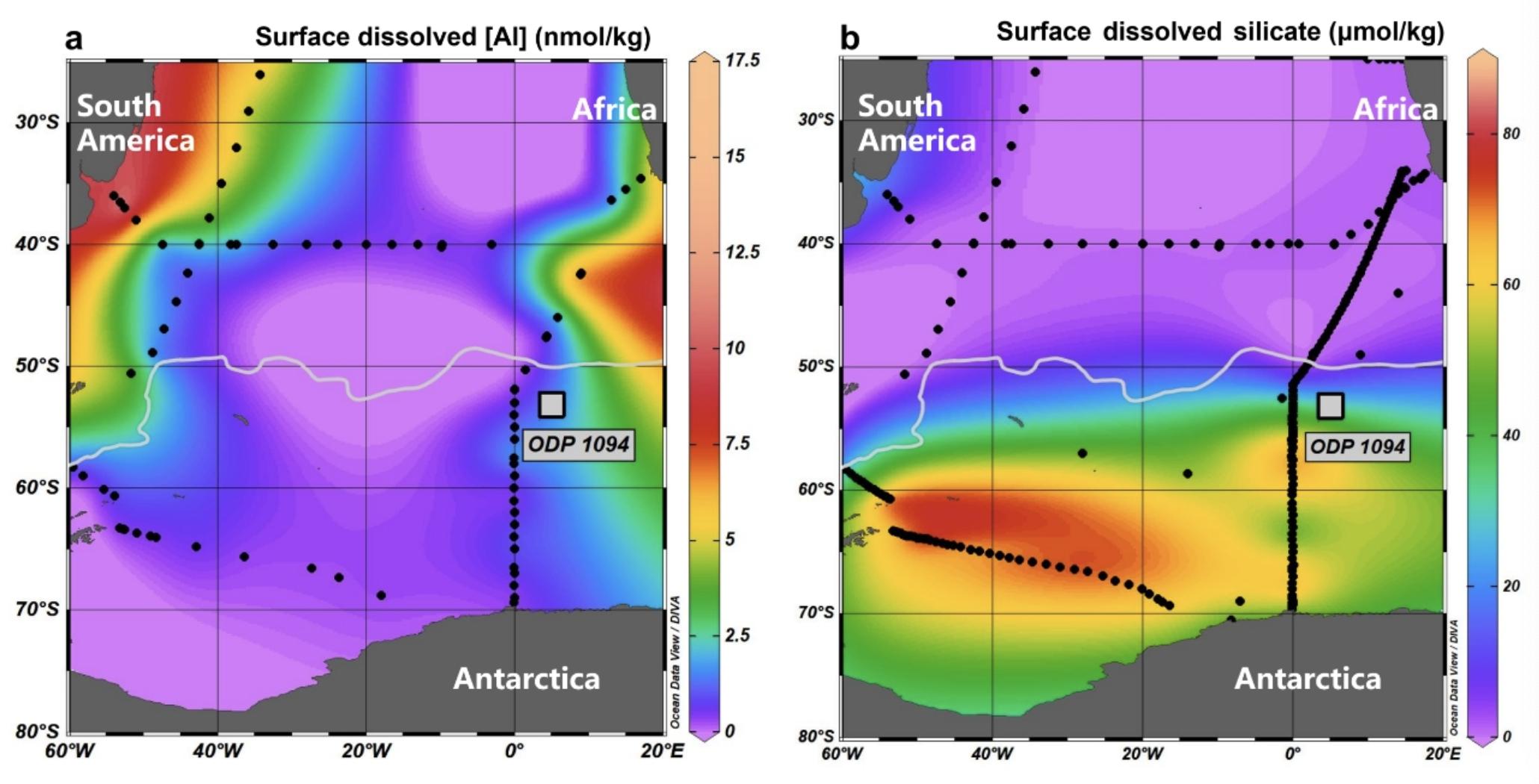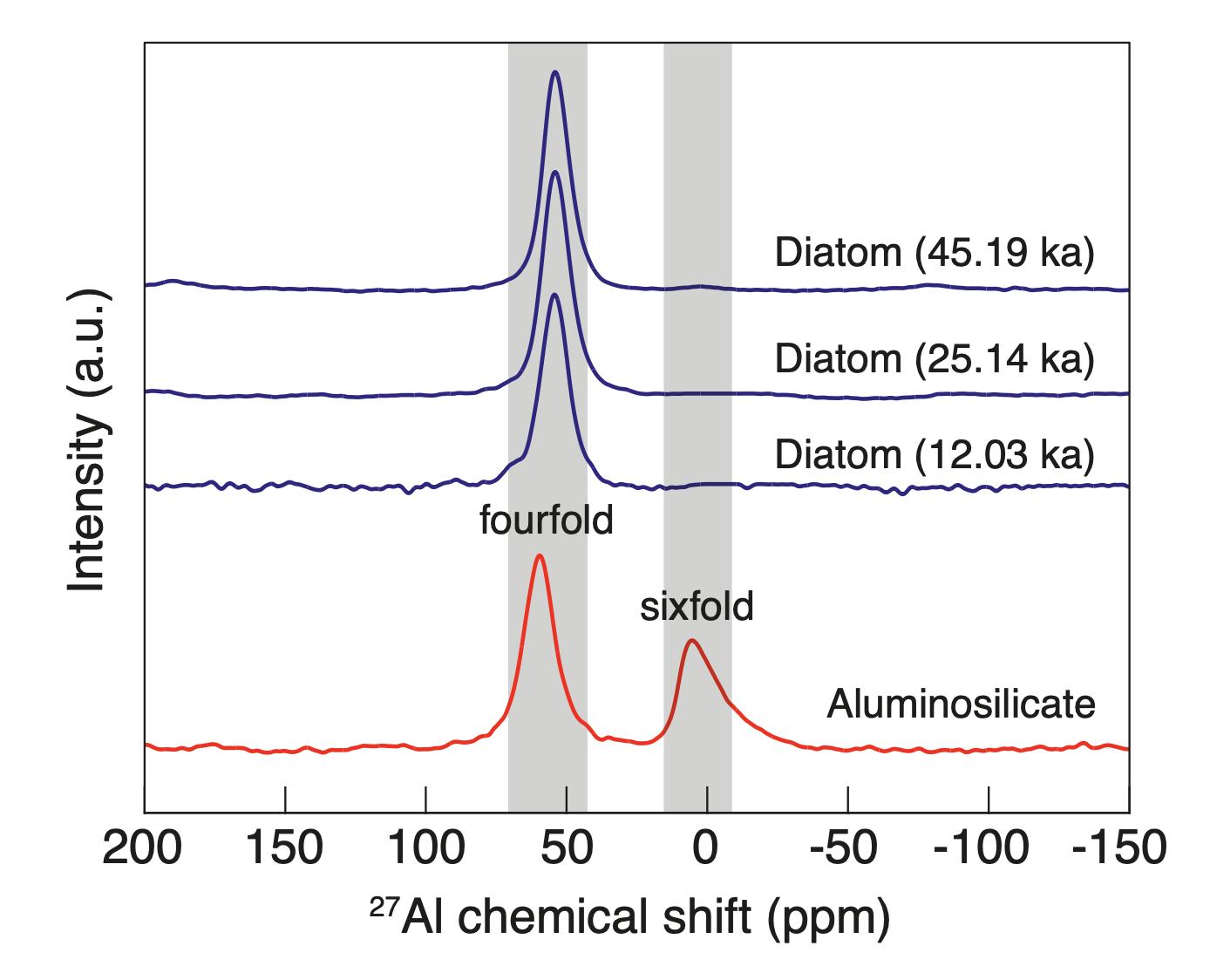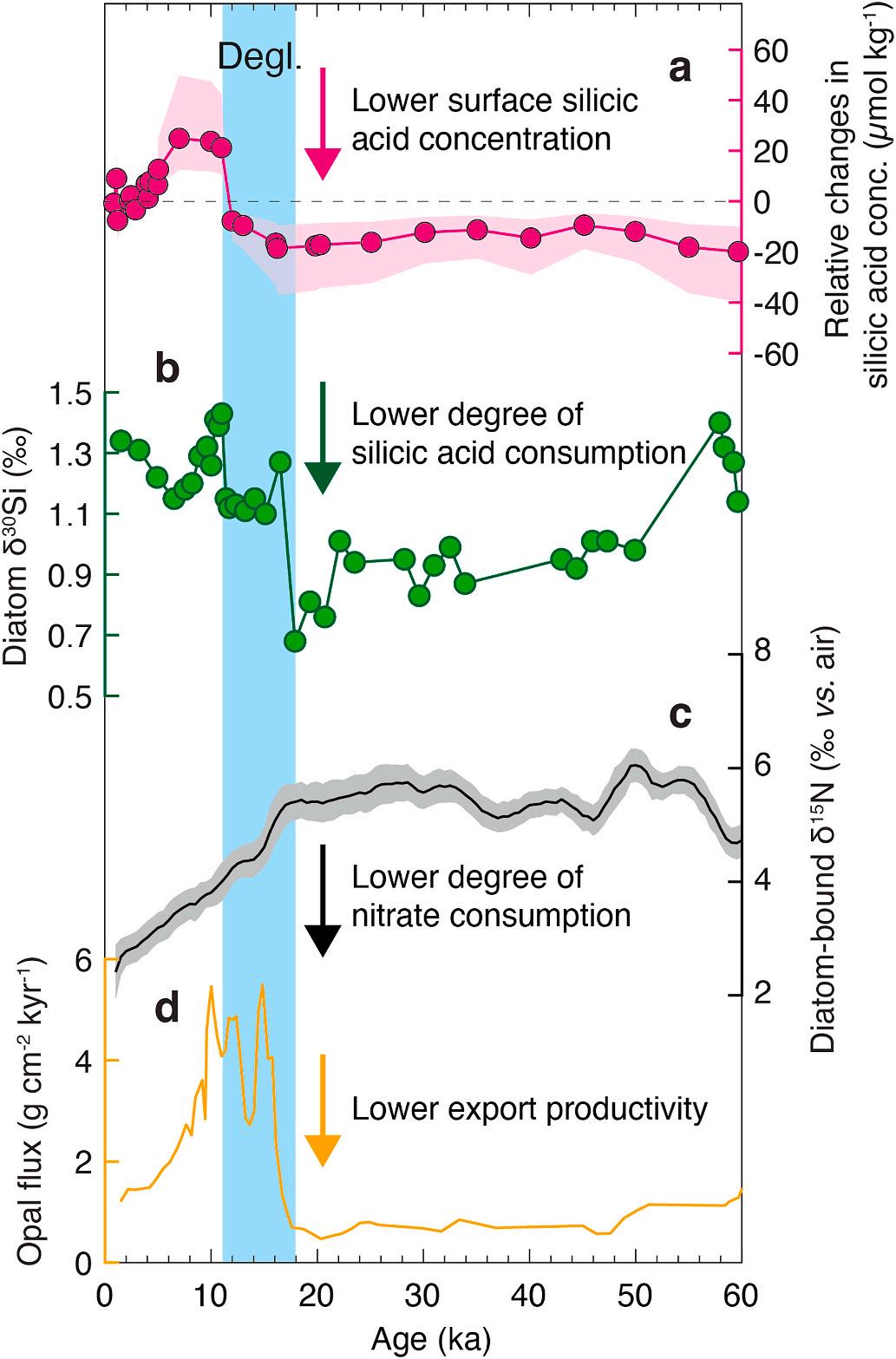Recently, Associate Prof. LI Tao from the Nanjing Institute of Geology and Palaeontology, Chinese Academy of Sciences (NIGPAS), in collaboration with Prof. Chen Tianyu from Nanjing University and other scholars, utilized samples from ODP Site 1094 in the Southern Ocean to determine surface seawater silica concentrations in the Antarctic region over the past 60,000 years, based on measurements of diatom frustule Al/Si ratios and 230Th-normalized sediment 232Th flux.
The relevant research results were published in Quaternary Science Reviews,.
The periodic variations in atmospheric CO2 concentration during glacial-interglacial cycles of the late Quaternary are among the most significant environmental features. Lower CO2 concentrations during glacial periods are attributed to increased carbon storage in the deep ocean, serving as a natural analog for studying oceanic absorption and storage of anthropogenic CO2.
The Southern Ocean is a key region for carbon exchange between the ocean and atmosphere, where physical circulation and biogeochemical processes may influence changes in deep-sea carbon storage during glacial-interglacial periods. Wind-driven upwelling processes bring carbon-rich and nutrient-rich (such as silicon and nitrogen) deep waters to the surface of the Southern Ocean. Part of this carbon is fixed by surface biota, re-entering the deep ocean, while another portion enters the atmosphere through ocean-atmosphere exchange. Reduced upwelling intensity and increased surface nutrient utilization during glacial periods in the Southern Ocean are likely primary factors contributing to increased deep-sea carbon storage. Additionally, it has been proposed that nutrients (especially silicon) transported by Southern Ocean upwelling may enhance biological productivity and further carbon fixation in mid-low latitude regions, thereby reducing atmospheric CO2 concentrations during glacial periods, known as the "silicic acid leakage hypothesis."
The key to validating the "silicic acid leakage hypothesis" lies in reconstructing the silica concentration in surface waters of the Southern Ocean during glacial periods. Previous studies have used diatom flux, biogenic barium flux, Ba/Fe ratios, and other indicators to infer changes in Southern Ocean biological productivity, but there has been no direct proxy for reconstructing surface seawater silica concentrations.
In recent years, researchers have employed silicon isotopes (δ30Si) from diatoms to reflect silica utilization efficiency, indirectly indicating changes in surface seawater silica concentrations. However, diatom δ30Si values are significantly influenced by sample preservation, diagenesis, and diatom species. Moreover, silica utilization efficiency is not directly correlated with silica concentrations and they are also influenced by processes such as upwelling intensity.
This research team first utilized measurement techniques such as EDS-SEM, NMR, and ICP-MS to eliminate factors like diagenesis, pore water exchange, and variations in diatom species, confirming that aluminum in diatom frustules originates directly from the surface seawater during biogenic silica synthesis. This provided a theoretical basis for reconstructing surface seawater Al/Si ratios in the Antarctic region using Al/Si ratios from diatom frustules obtained from ODP Site 1094.
“Building on studies indicating a strong positive correlation between dust flux in the open ocean and dissolved Al concentrations in surface seawater, we utilized 230Th-normalized sediment 232Th flux to infer changes in dust flux in the in the Antarctic zone of the Southern Ocean, thereby constraining variations in dissolved Al concentrations in surface seawater”, says LI. Finally, by combining records of surface seawater Al/Si ratios and dissolved Al concentrations in the Antarctic zone of the Southern Ocean, the team obtained a record of surface seawater silica concentrations over the past 60,000 years.
The reconstructed results indicate significantly lower surface seawater silica concentrations in the Antarctic zone of the Southern Ocean during the Last Glacial Maximum compared to the Holocene. Combined with reconstructions of silicon isotope ratios in diatom frustules (indicating silica utilization efficiency), this study suggests that the lower silica concentrations and utilization rates during the Last Glacial Maximum in the Antarctic zone of the Southern Ocean were the result of weakened upwelling and enhanced iron fertilization.
“Our study does not support the "silicic acid leakage hypothesis" and advances our understanding of physical circulation and biogeochemical processes in the Southern Ocean”, says LI.
This research was supported by the National Key Research and Development Program of China, the Strategic Priority Research Program of the Chinese Academy of Sciences, the National Natural Science Foundation of China, and the Hundred-Talent Program.
Reference: Xinyu Yang, Tao Li*, Tianyu Chen*, Jianfan Zheng, Wei Li, 2024. Incorporation of Al into diatom frustule as a proxy of seawater Al/Si ratios in the Antarctic Zone of the Southern Ocean: Implications for surface silicic acid concentrations during the last glacial period. Quaternary Science Reviews 334. https://doi.org/10.1016/j.quascirev.2024.108724.

The location of ODP 1094 sediment core

27Al NMR spectra of diatom frustule samples of different ages compared to an aluminosilicate standard

Reconstructed relative changes in surface silicic acid concentration compared to other ocean records
Contact:
LIU Yun, Propagandist
Email: yunliu@nigpas.ac.cn
Nanjing Institute of Geology and Palaeontology, Chinese Academy of Sciences
Nanjing, Jiangsu 210008, China
Download:
